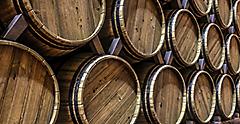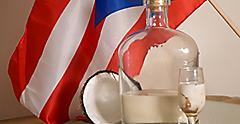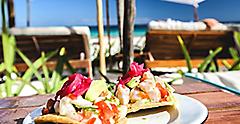Local Insight: The Best Caribbean Rum & Their Distilleries
Guide to Tasting Good Rum in the Caribbean Islands
By Amanda Mesa | Published on May 20, 2022
The Caribbean is known for many things — beautiful beaches, candy-colored port towns, crave-worthy cuisine and, of course, Caribbean rum. As a journalist, I've covered food and spirits from around the world, but there's something about the Caribbean that keeps me coming back on a quest to find the best Caribbean rum. From Jamaica to Puerto Rico to St. Croix and beyond, the islands in this region are peppered with great Caribbean rum distilleries — each touting its own unique legacy, production method and flavorful expressions.
Just as no trip to Mexico is complete without a tour of local tequila and mezcal distilleries, and no visit to Ireland or Scotland is complete without a crash course in local whiskies, a rum tour through the Caribbean is well worth it. Caribbean rum has a long history and cultural relevance, and you can taste it in every sweet, spicy, and fruity sip.

The Origins And Making Of Caribbean Rum

The first mention of rum is found in records from around 1650 in Barbados. The spirit was often referred to as "kill-devil" or "rumbullion," shortened to "rum" over a decade later. But while the key ingredient in rum — molasses — came from the West Indies, the spirit itself was originally distilled in New England for some time. In the U.S., it was sometimes called "blackstrap."
The oldest type of rums are dark, heavy and full-bodied with a strong flavor of molasses. These are the kinds of Caribbean rum that are made in Jamaica and Barbados. The rum is usually double-distilled in pot stills and then stored and aged in puncheons made of oak wood. Caramel is added after aging, deepening the rum's color.
In the late 19th century, other islands — namely Puerto Rico — began producing dryer, lighter-bodied rums using cultured yeast in fermentation and modern patent stills for distillation. These rums were typically aged just one to four years, versus the longer five- to seven-year aging process common in the West Indies. They could range from pale and mild (often marketed as white-label) to amber and sweet (marketed as gold-label).
Book Now
What Makes A Quality Caribbean Island Rum?

Everyone's taste and definition of "quality" are different, therefore it's nearly impossible to award the title of "best Caribbean rum" to any specific island. Some rum enthusiasts feel the longer-aged, more robust rums of Jamaica and Barbados make them superior to lighter, milder styles found in other islands like Puerto Rico. Some rum-lovers feel the opposite is true. It's also worth noting that, contrary to what you might expect, the age of a rum isn’t always the main factor in deciding the better flavor profile. Unlike whiskey, the rum-aging process isn't tightly regulated, as a result you may want to take the age on the label as a loose estimation.
What's more, while older rums might be better for sipping, younger rums tend to be better for use in cocktails like piña coladas, mojitos and daiquiris. It all depends on how you like to enjoy the spirit. With this all in mind, it's essential for any aficionado to try different types of rum in different ways while you're visiting for a tropical island Caribbean vacation. If you are new to the world of rum, we have detailed some of the distinct characteristics you can expect from one style to another while traveling on an island-hopping cruise.
Different Types Of Rum: Jamaican, Barbados, & Puerto Rican Distilleries

Jamaican Rum: Unique Flavor Profile

Barbados Rum: Distillery Tours Of Local Brands

Puerto Rican Rum: World Famous Distilleries
The Best Food Pairings For Caribbean Rum


Now that you have a bit of background on this beloved spirit from the tropics, you're ready to dive deeper into the world of Caribbean rum during your next island hopping adventure. Because cruises let you experience multiple isles on one trip, you'll be a Caribbean rum connoisseur by the end of your vacation.
Taste the best rum as you travel from island to island on a soothing Caribbean vacation cruise.





